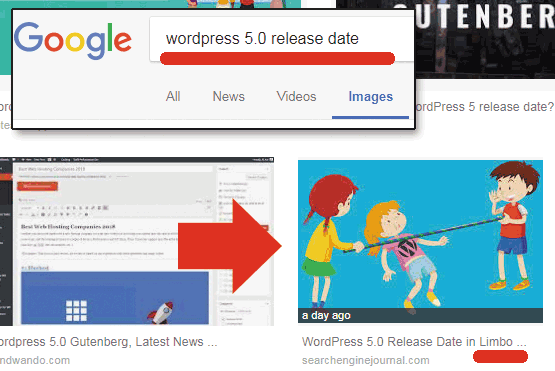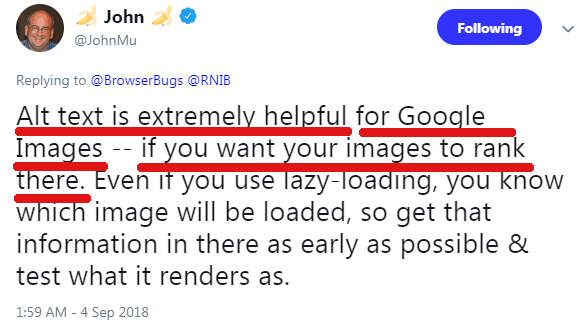
Content and Ranking Factors for Google AI Search
I’ve been considering ranking factors this year and asked several leading SEOs for a reality check (Real World Ranking Factors). The feedback I received confirmed the direction of my thoughts about ranking factors. Google’s algorithm has changed dramatically. While ranking factors still matter, content factors may be playing a larger role.
SEO Ranking Factors Evolve
Search engines evolve faster than the SEO industry. The SEO industry is in a constant state of catching up. A good example is the 2005 announcement of the role statistical analysis played in ranking (quality websites) and demoting (spam) websites.
Statistical Analysis – 2005
Statistical analysis was a major evolution in search engine algorithms. The ranking factors associated with SEO evolved along with it. Link ranking factors now focused on statistically relevant quantities of anchor text and so on. Quantity of links remained an important ranking factor.
Penguin Algorithm – 2012
The Penguin algorithm, which is arguably about Link Ranking, also took the SEO community by surprise. Nobody saw it coming. There were lots of guesses as to what it was.
It took several years before a plausible explanation backed by citations was published What is the Penguin Algorithm?
Link ranking algorithms was a milestone that changed how the SEO industry thought about ranking factors related to links. SEO was no longer about obtaining loads of links and loads of anchor text. Ranking factors evolve in response to how search engines rank websites.
Ranking Factors for AI
Now we’re in an era where AI answers 30% of search queries. Search Engine Journal published the first article that discussed Neural Matching that named a specific research paper. Google has been using AI in search for almost the entire year of 2018. It was only recently announced, months and months later.
So how does AI ranking affect ranking factors?
Reviewing these AI type algorithms, it’s clear that they tend to come into play after the ranking algorithm has already done it’s thing. So we’re safe in assuming that traditional type ranking factors like links and headings still play a role for weeding out spam and less relevant search results candidates.
The search engines rank websites for a search query in what’s called a Ranking Engine. After that the results are passed over to the Neural Matching algorithm to then choose a search result with factors other than traditional ranking factors. Links don’t play a role in this part of search ranking.
That’s a simplification of the process, of course. There are other algorithms in the ranking engine that introduce synonyms and stemming in order to broaden the amount of pages and not limit the results to pages that contain all the keywords.
What I think is key to keep in mind is that these AI based algorithms tend to work after the ranking algorithms have done their thing. And it’s at this point that traditional ranking factors like headings, title tags, alt attributes and links take on less importance.
AI Search Aspires to Answer Like a Human
When you look at a web page for an answer to a question, do you examine the title tag and the headings? Of course not. You look for your answer.
Google’s AI can be said to do the same thing.
In simple terms, AI can be said to have two functions:
- To precisely understand what a person really means when they type a search query
- To find a web page that precisely answers the real question hidden within any given search query
Just like a real person would, AI is not counting how many times a keyword appears on the page anymore. Nor is it looking for synonyms. It’s looking to answer a question, to solve a problem.
So, rather than focus exclusively on traditional ranking factors, it kind of makes sense to also think in terms of answers (even for eCommerce).
In eCommerce someone is looking to buy. So does it make sense to have informational content on that page? As always, check what Google is ranking for confirmation.
Content Factors for Ranking
Content Factors is where I’m headed to in this article. I am not advocating a move away from ranking factors. I am suggesting that it may be useful to add a deeper consideration of Content Factors to the mix of considerations for SEO.
Content Factors
- Images are content.
- Topic is content.
- Search query meanings are the focus of content.
Images as Content
Carefully chosen images can influence the ranking of a web page and help it pop into featured snippets, in additon to ranking in Google image search.
Topic as Content
Outlining your topic is content in itself. It provides the focus for your web page. Lack of a focused topic is, in my opinion, a leading cause of an inability to rank. I conduct many site audits and this is something quite common to today’s search algorithm.
Inability to rank is not always about “page quality” and “being spammy.” Increasingly, what causes a site to rank less well, particularly for informational sites, is an issue with the page topic.
Search Query Meanings
We’re no longer in the Keyword Era. Keyword research is just the beginning. Understanding what users mean is the next evolution of SEO, which follows how search engines rank sites.
Ranking Factors can Support Content Factors
Ranking factor type elements tend to support the Content Type Factors. For example, a savvy publisher will select images that are directly relevant to the content. That’s a content factor consideration.
Here are examples of ranking related considerations:
- Content around the image is directly relevant to the image.
- Captions associated with the content informs Google about what the image is about.
- The URL of the image should ideally describe the image.
The first two aren’t generally considered ranking factors, but they do play a role. Although a descriptive URL can be considered a ranking factor, I tend to consider all three of those as content factors, along with the choice of the image itself. They all work together to tell what the image is about and the image itself works to influence what the meaning of the page is about.
The old way for SEO was like this:
Keyword Research > Add Keywords to Ranking Elements (anchor, headings, titles), leads to > Rankings
Let’s Examine Alt Attribute
The alt attribute is related to accessibility. The correct manner to use an alt attribute is to describe what the image is.
Here is what Google’s developers page recommends:
Images are an important component of most web pages, and are of course a particular sticking point for low-vision users. We must consider the role an image plays in a page to work out what type of text alternative it should have.
In the page we have a picture of a cat, illustrating an article on cats’ well-known judgmental behavior.
…You can use the
altattribute to provide a useful text alternative to this image — for example, “A cat staring menacingly off into space.”
Google does not recommend using your keywords in the alt attribute. Google recommends accurately describing what the image is.
For example, in a previous article about WordPress 5.0’s release date being in limbo, I used an image of children playing the game of limbo.
In the alt attribute I accurately described the image as:
“Image of child symbolizing WordPress who is doing a limbo, a metaphor for the state of limbo.”
And it’s ranking in Google images, not necessarily just because of (or in spite of) the alt attribute:
 This is an example of how ranking factors and content factors work together to help Google understand what an image is for purpose of improving image search results.
This is an example of how ranking factors and content factors work together to help Google understand what an image is for purpose of improving image search results.This is why it’s so important to get your Content Factors right. The best case scenario is to use an image that is directly or indirectly related to what the page is about, even if it is a metaphorical connection. Everything, the content factors and the ranking factors must work and support each other. In my opinion it’s best to avoid random choices!
If the image is a building that symbolizes something, then the alt tag should describe it exactly in that manner. Doing so will help Google understand the image is and help it to rank the image in Google Image Search.
Google’s John Mueller affirmed on Twitter that the Alt attribute is helpful for Google:

Google has image algorithms that are precise enough to not only identify that there’s a dog in a photo but it can identify the breed of the dog.
Using the alt attribute in the manner it is recommended by Google will help that image rank better in Google Images and work together with the rest of the content to rank the web page.
This is what I mean about how traditional Ranking Factor type elements are not necessarily the cause of good rankings in themselves. That’s how it used to work in the past and in less competitive niches the old approach can still work.
But today, in my opinion, we have to consider content factors. Chief among those is identifying what Google believes a user means when they type a search query (content factors). Then work from there to outline the content and use the traditional ranking factors (headings, title, alt attributes) to support the content.
Content and Ranking Factors
When doing SEO for a search engine that uses AI for 30% of search queries, it takes more planning in order to rank. The simplistic idea that ranking elements are expressly for adding keywords seems anachronistic nowadays, especially considering that AI doesn’t care about keywords.
That’s why I feel it’s shortchanging someone to simply answer yes when someone asks if the alt attribute is a ranking factor. The best advice, in my opinion, is to say it’s more nuanced than adding keywords to a ranking element. It doesn’t take a scientist to realize this, just look at the search results (SERPs).
Source: https://www.searchenginejournal.com/content-and-ranking-factors/280951/



